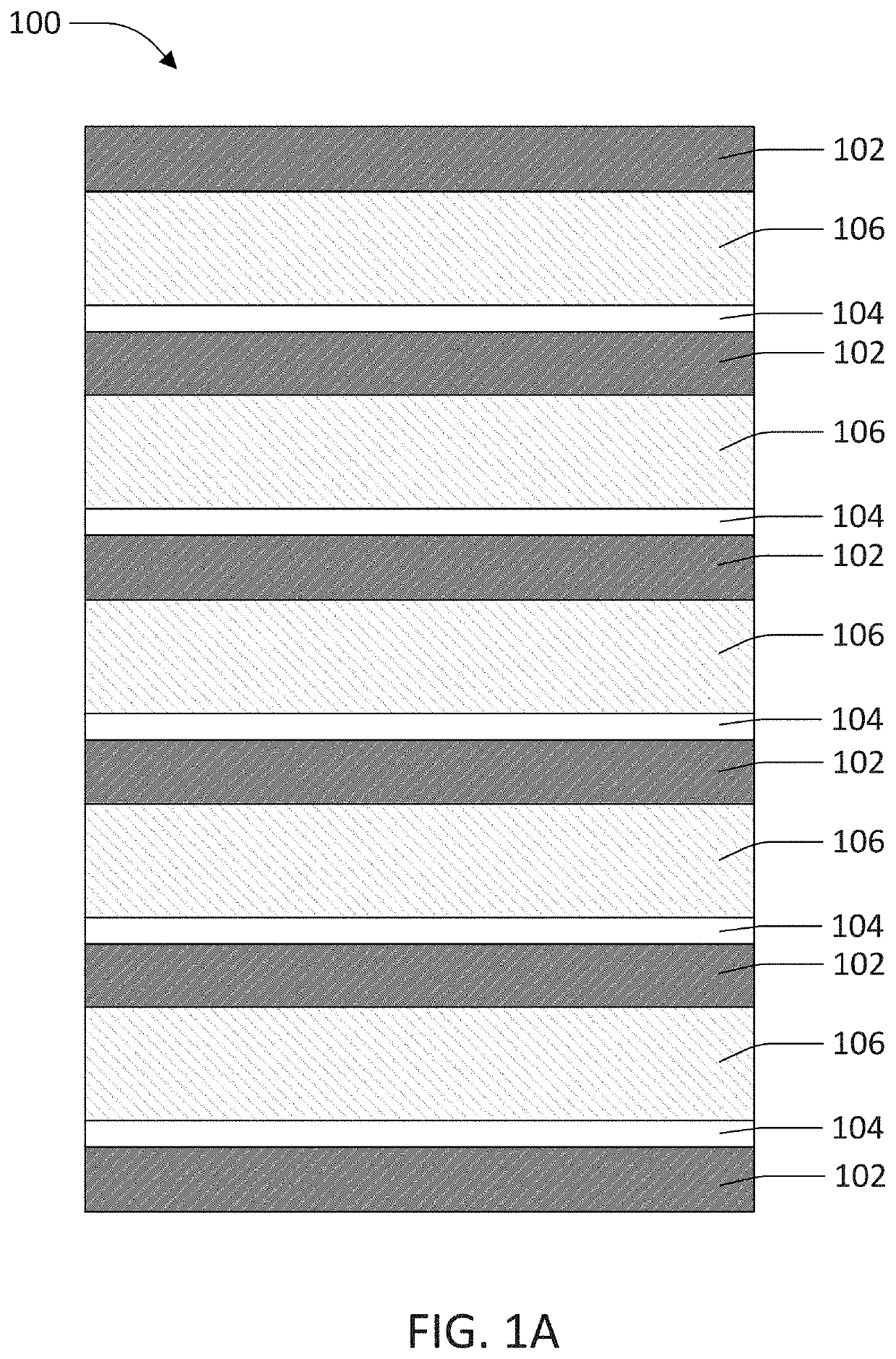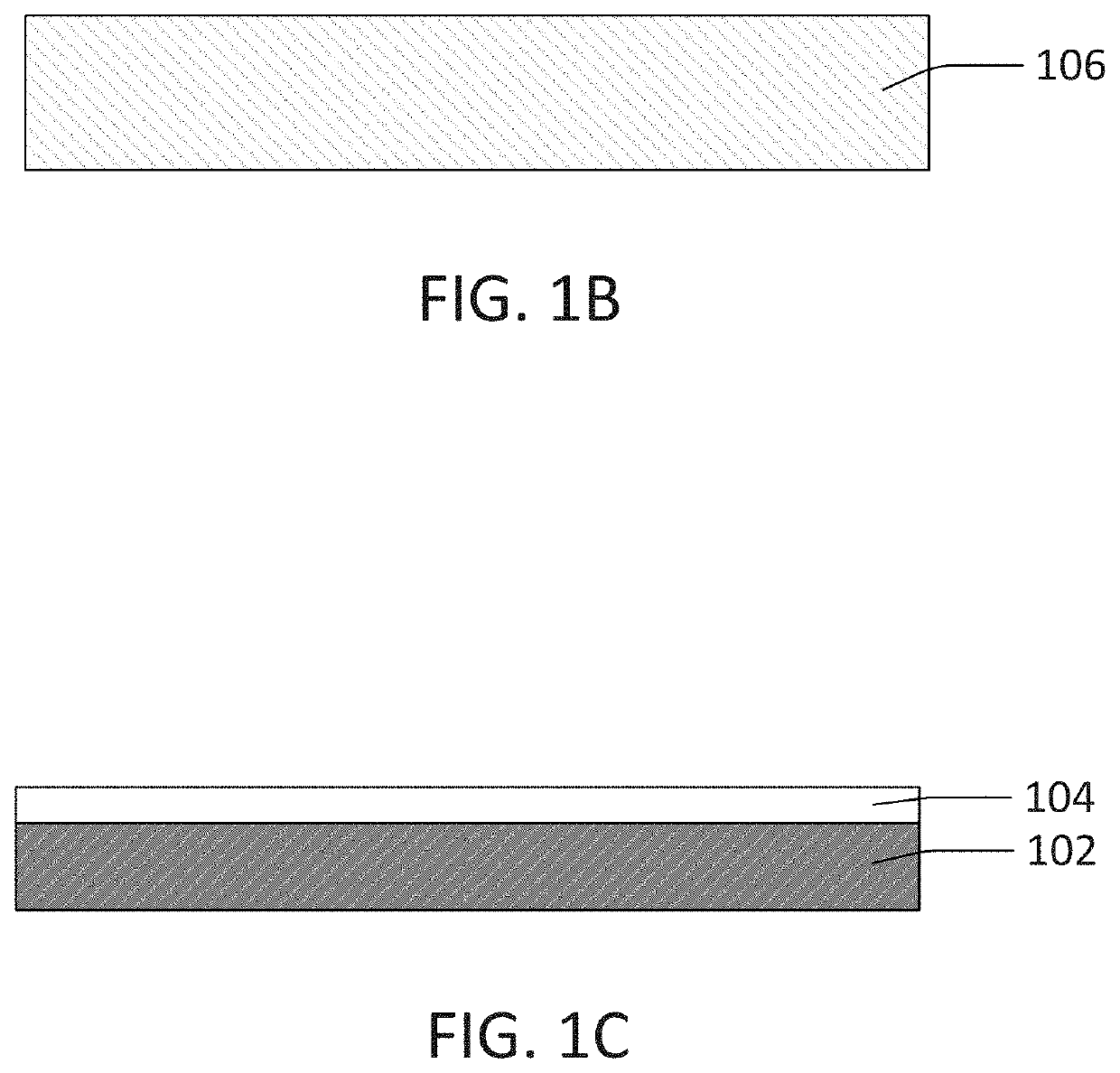Current collector clad with lithium ion conducting solid electrolyte
a lithium ion conducting and solid electrolyte technology, applied in the direction of cell components, final product manufacturing, sustainable manufacturing/processing, etc., can solve the problems of shortening the battery life, reducing the coulombic efficiency and eventual failure, and reducing the safety hazards
- Summary
- Abstract
- Description
- Claims
- Application Information
AI Technical Summary
Benefits of technology
Problems solved by technology
Method used
Image
Examples
example 1
[0058]As shown in FIG. 3, a current collector 302 with a slurry cast and sintered solid-state electrolyte 304 was attached to an epoxy mounting 316. A cross section was then imaged using a scanning electron microscope (SEM). In this experiment, lithium lanthanum zirconium oxide was used as the solid-state electrolyte. The current collector used was nickel. The solid-state electrolyte layer exhibited Li-ion conductivities of about 0.1 mS / cm which is comparable to similar materials processed using bulk techniques.
example 2
[0059]As shown in FIG. 4, the discharge energy density (Wh / L) versus cycle number was plotted for an experimental electrochemical cell identified as Gen4 in FIG. 4. The experimental cell was constructed from a current collector clad with a solid electrolyte separator, which was a sintered LLZO garnet, and a conventional Li-ion composite cathode and liquid electrolyte where the composite cathode was comprised of 94 wt % 111 NMC active material, 3 wt % carbon black conductive additive, and 3 wt % polyvinylidene difluoride (PVDF) binder and the liquid electrolyte was 1M LiPF6 in 3:7 ethylene carbonate:ethyl methyl carbonate (EC:EMC) with 2 wt % vinylene carbonate (VC). For comparison, a control cell was assembled in which a bare current collector was used with a traditional polyethylene polymeric Li-ion separator and the same cathode. Both cells were galvanostatically cycled at 1C charge and 1C discharge rates with cutoff voltages of 2.5 and 4.2V and no constant voltage segment. (A 1C ...
PUM
| Property | Measurement | Unit |
|---|---|---|
| thickness | aaaaa | aaaaa |
| thickness | aaaaa | aaaaa |
| thickness | aaaaa | aaaaa |
Abstract
Description
Claims
Application Information
 Login to View More
Login to View More - R&D
- Intellectual Property
- Life Sciences
- Materials
- Tech Scout
- Unparalleled Data Quality
- Higher Quality Content
- 60% Fewer Hallucinations
Browse by: Latest US Patents, China's latest patents, Technical Efficacy Thesaurus, Application Domain, Technology Topic, Popular Technical Reports.
© 2025 PatSnap. All rights reserved.Legal|Privacy policy|Modern Slavery Act Transparency Statement|Sitemap|About US| Contact US: help@patsnap.com



